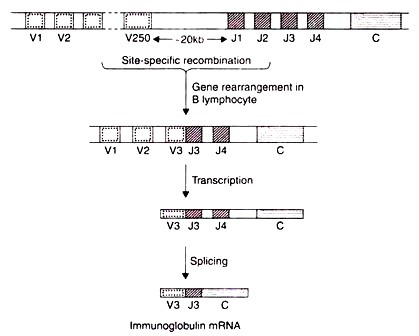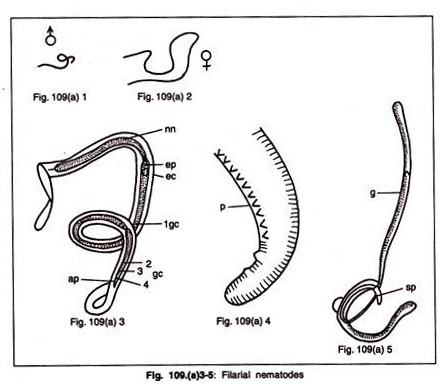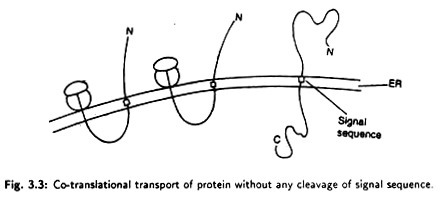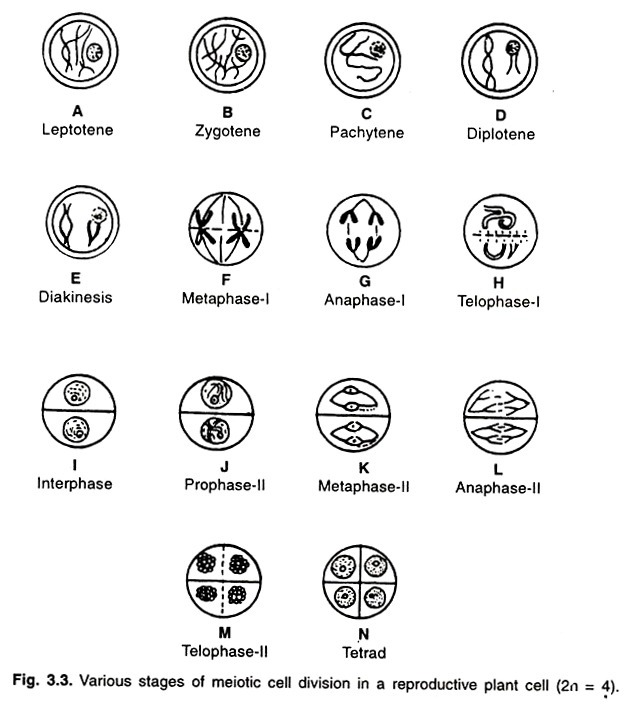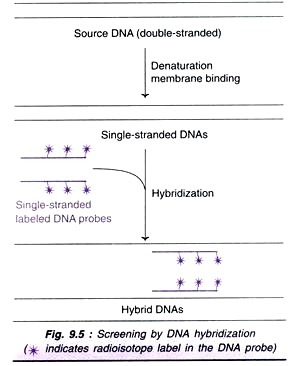The following points highlight the eight types of protein metabolism. The eight types are: 1. Metabolism of Glycine, Alanine Serine, Threonine 2. Metabolism of Arginine, Proline, Histidine, Glutamine, Glutamat 3. Metabolism of Asparagine and Aspartate 4. Metabolism of Methionine, Cysteine 5. Metabolism of Phenylalanine, Tyrosine 6. Metabolism of Tryptophan 7. Metabolism of Valine, Leucine, Isoleucine and 8. Metabolism of Lysine.
Contents
- Protein Metabolism Type # 1. Metabolism of Glycine, Alanine Serine, Threonine:
- Protein Metabolism Type # 2. Metabolism of Arginine, Proline, Histidine, Glutamine, Glutamat:
- Protein Metabolism Type # 3. Metabolism of Asparagine and Aspartate:
- Protein Metabolism Type # 4. Metabolism of Methionine, Cysteine:
- Protein Metabolism Type # 5. Metabolism of Phenylalanine, Tyrosine:
- Protein Metabolism Type # 6. Metabolism of Tryptophan:
- Protein Metabolism Type # 7. Metabolism of Valine, Leucine and Isoleucine:
- Protein Metabolism Type # 8. Metabolism of Lysine:
Protein Metabolism Type # 1. Metabolism of Glycine, Alanine Serine, Threonine:
All these amino acids are glucogenic and share a common pathway.
The reaction steps involved in their metabolism are:
Metabolic Disorders of Glycine:
1. Glycineuria:
It is a rare disease due to defect in renal reabsorption of glycine. 600 to 1000 mgs of glycine is excreted per day. Excess of this leads to oxalate renal stones.
2. Primary hyperoxaluria:
Excess of oxalic acid is excreted because of the deficiency of decarboxylase or transaminase. So glyoxalic acid is converted to oxalic acid. The history of the disease is Nephrocalcinosis and recurrent infection of the urinary tract. Death occurs in childhood or early adulthood because of renal failure or hypertension.
Protein Metabolism Type # 2. Metabolism of Arginine, Proline, Histidine, Glutamine, Glutamat:
These are glucogenic amino acids and share a common pathway.
Importance of Histidine Metabolism:
It is an essential and glucogenic amino acid. It serves as a source for one carbon moiety (formate). In pregnancy there is excess excretion of histidine in urine (pregnancy histidinuria). It is not found in the urine of normal persons hence is of diagnostic importance for pregnancy. Decarboxylation of histidine produces histamine which increases the blood pressure.
Antihypertensive drugs cause inhibition of production of histamine. RBC and liver contain a histidine derivative called ergathionine which is a reducing agent and gives false result for glucose level. Carnosine and anserine are formed by histidine and beta alanine present in the muscle. The excretion of these derivatives is of diagnostic importance in myopathy.
The reaction steps involved in their metabolism are:
Histidenemia:
It is a metabolic disorder due to the deficiency of histidase enzyme. It is an inherited autosomal recessive disease. Clinical symptoms are mental retardation and a characteristic speech defect. Imidazole pyruvate is formed and excreted in urine which gives a false FeCl3 test for phenylketonuria.
Protein Metabolism Type # 3. Metabolism of Asparagine and Aspartate:
Asparagine and Aspartate produce oxaloacetate as the end product of their metabolism.
Importance of the Amino Acids Glutamate and Aspartate:
Both are glucogenic. Both transport ammonia from tissues to liver in their amide form. Glutamate helps in the detoxification. Glutamate plays an important role in the transport of potassium (K+) in the central nervous system (CNS). It forms gamma amino butyric acid (GABA) upon decarboxylation which regulates the neural activity (depresses its activity). It is a constituent of glutathione and folic acid. Aspartate is a constituent of purines and pyrimidine’s.
Protein Metabolism Type # 4. Metabolism of Methionine, Cysteine:
Methionine and cysteine are sulphur containing amino acids. Methionine is oxidized to propionyl- CoA which is converted to succinyl-CoA that enters the TCA cycle.
Metabolic Importance of Methionine:
1. Methionine along with cysteine maintains the secondary and tertiary structure of proteins.
2. It forms β-mercepto pyruvic acid which conjugates with cyanide to form thiocyanate and sulphite to form thiosulphate.
3. It is a constituent of scleroprotein.
4. It participates in detoxification of bromobenzene.
5. Methionine is the precursor for the synthesis of choline, creatine, glutathione, epinephrine and taurine which in turn forms the bile acid taurocholic acid.
Metabolic Disorders of Sulphur Containing Amino Acids:
1. Cystinuria (cystine-lysine in urine):
It is an inherited metabolic disease. Urinary excretion is 20- 30 times more than the normal due to the failure in the re-absorption of cystine. Along with it lysine, homocysteine are also excreted. Hence cystinuria is a misnomer. Cystine-lysinenuria is the actual term to be used. But cystine deposits in the kidney forming cystine calculi. This may be a major complication of the disease, hence the name cystinuria. There may be intestinal transport defects also.
2. Cystinosis (cystine storage disease):
Cystinosis is due to acute renal failure leading to generalized amino aciduria. Cystinosis is also an inherited disease. Cysteine crystals are deposited in many tissues and organs (particularly in the reticuloendothelial system). The primary defect is due to the impaired lysosomal function.
3. Homo-cystinuria:
It is also an inherited disease i.e. homocystinuria-1. The clinical symptoms are occurrence of thrombosis, osteoporosis, dislocated lenses in the eyes and frequently, mental retardation.
Protein Metabolism Type # 5. Metabolism of Phenylalanine, Tyrosine:
Phenylalanine is an essential amino acid.
The steps involved in their oxidation are:
Metabolic Disorders of Phenylalanine and Tyrosine Metabolism:
1. Phenylketonuria:
It is a metabolic disorder with autosomal recessive inheritance. Due to defect in the enzyme phenylalanine hydroxylase (monooxygenase), phenylalanine accumulates in CSF, blood and in tissues. Alternative pathways start, leading to the formation of phenyl pyruvic and phenyl lactic acid. These inhibit the degradation of tyrosine and tryptophan.
Therefore excretion of 5-hydroxy indole acetic acid and 5-hydroxy tryptamine (serotonin) in the urine is reduced. But tryptophan derivatives like indole acetic acid increases. Due to increase in phenylalanine in the cells they are not able to utilize other amino acids. Thus brain cells are deprived of essential nutrients for their maturation in the early stages.
Even though it is not toxic to brain it shows neurological signs like irritability, convulsions, muscular hypertonia, tremors and retarded mental development. Phenylalanine competitively inhibits tyrosine resulting in blond hair, blur iris and fair skin. The skin becomes vulnerable to minor inflammatory lesions, rashes and eczema. Accumulation of phenyl acetic acid and lactic acid leads to musty body odour. Test for phenylketonuria: 10% FeCl3 solution when added to patient’s fresh urine results in emerald green colour which fades after 20 minutes.
2. Tyrosinosis:
It is a very rare disease due to the deficiency of p-hydroxy phenyl pyruvic acid oxidase. So the latter is excreted in the urine, which turns dark on long standing. The black pigment is deposited in the sclera (between the cornea and the canthi), ear and nose cartilage which is termed as ‘ochronosis’. Ochronotic arthritis commonly involves shoulder and hips. Pigment is also deposited in the kidney leading to renal stones and nephrosis. There is no proper treatment for this; however ascorbic acid prevents the oxidation.
3. Alkaptonuria:
Homogentesic acid oxidase is deficient.
4. Albinism:
This is due to the deficiency of tyrosinase enzyme, which is an aerobic oxidase forming melanin in the melanosomes present in melanocytes of the skin. Albinism is of three types—in Type-I tyrosinase is absent, in type-II tyrosine cannot be transported to the melanosomes due to lack of permease and in type-Ill tyrosine normally converts to DOPA and quinone and thereafter the enzymes are absent. The condition is called oculocutaneous albinism. Clinically the skin is de-pigmented. It does not tan but burns on exposure to sunlight. The hair is white and silky. The iris is bluish or pinkish.
Protein Metabolism Type # 6. Metabolism of Tryptophan:
It is an essential, glucogenic & ketogenic amino acid. The main pathway of tryptophan is formation of anthranillic acid and then glutaryl-CoA and acetyl-CoA. Small amount is also converted to niacin. 60 mg of tryptophan forms 1 mg of niacin. So tryptophan rich diets have a sparing effect on niacin requirement.
On decarboxylation, tryptophan is converted to 5-hydroxy tryptamine called serotonin. It is a potent vasoconstrictor, stimulates smooth muscle contraction and is a stimulator of cerebral activity. It is formed in intestinal epithelium, blood platelets and in the brain. In tumours like argent affinomas, due to oxidation of serotonin there will be excess formation of 5-hydroxy indole acetic acid (5-HIAA) which is excreted in urine. Normal excretion of 5-HIIA is 7 mg/day.
In malignant carcinoid it is 400 mg/day. Normally 1% of tryptophan is converted to serotonin. During carcinoid, 60% of this is converted to serotonin, so there is no formation of niacin. Symptoms like pellagra and negative nitrogen balance are seen. Seretonin in brain is in bound form.
Reserpine as anti-hypertensive drug releases serotonin and is thus available for monoamine oxidase which converts serotonin to 5-HIAA. Hence, reserpine brings depression of cerebral activity. Melatonin the hormone of the pineal body and the peripheral nerves of humans is synthesized from serotonin.
Hartnups’ disease:
It is a rare metabolic disease in which transport of mono amino mono carboxylic acids is defective. Accumulation of tryptophan results in formation of indole pyruvic and acetic acid, so amino aciduria is observed. Niacin formation is impaired. Symptoms exhibited are appearance of pellagra, skin rashes with intermittent cerebral ataxia and mental retardation.
Protein Metabolism Type # 7. Metabolism of Valine, Leucine and Isoleucine:
Maple Syrup Urine:
It is a metabolic defect related to branched chain amino acids like leucine, isoleucine and valine due to deficient decarboxylase enzyme resulting in the accumulation of these amino acids in the CSF and blood. Synthesis of protein and lipoprotein is diminished. There is rapid degradation of brain. The smell of maple syrup in urine is attributed to keto acids formed from these branched chain amino acids upon transamination.
Protein Metabolism Type # 8. Metabolism of Lysine:
Lysine is an essential amino acid which is both glucogenic and ketogenic. It is not present in adequate amounts in cereal proteins. Hence its deficiency in vegetarians is quite common. It cannot be deaminated to its keto acid.
Lysine condenses with α-ketoglutarate forming a schiffs base and then by the action of dehydrogenase it is reduced to saccharopine which on further dehydrogenation finally forms adipic acid. Adipic acid sequentially produces acetyl-CoA. Metabolic disorder of lysine is rare. However hyperglycemia with associated hyperammonemea is seen.